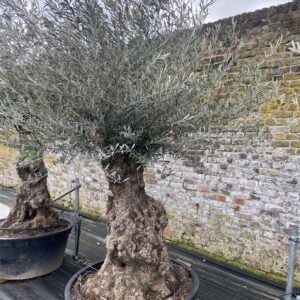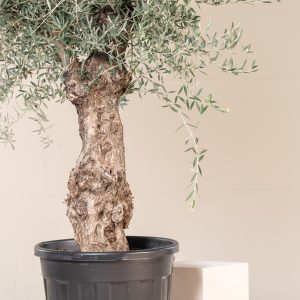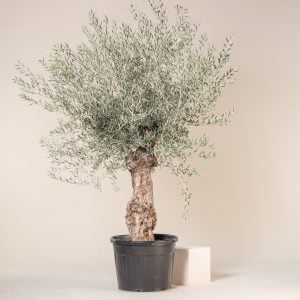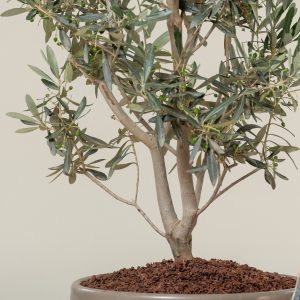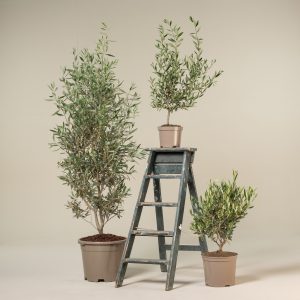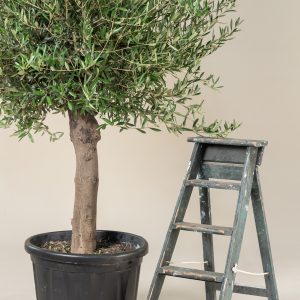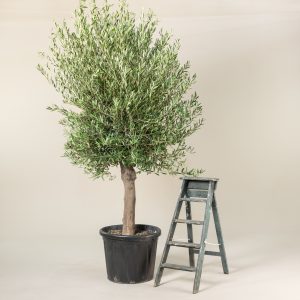Among the oldest cultivated trees in the world, the olive tree is a great addition to any garden. Growing well both in pots and in the ground, even in poor or stony soil.
Olive trees are evergreen and will add a Mediterranean feel to your garden, patio or balcony.
In an especially warm and sheltered site they may produce fruit. However, in the UK the olive trees are grown mainly for their architectural effect.
They come in various shapes, age, and sizes. They can be natural forms (bush), standard (tree shaped), mature, pruned topiary, or bonsai.
Ancient olive trees reclaimed from olive farms make up also a significant share of the varieties available.
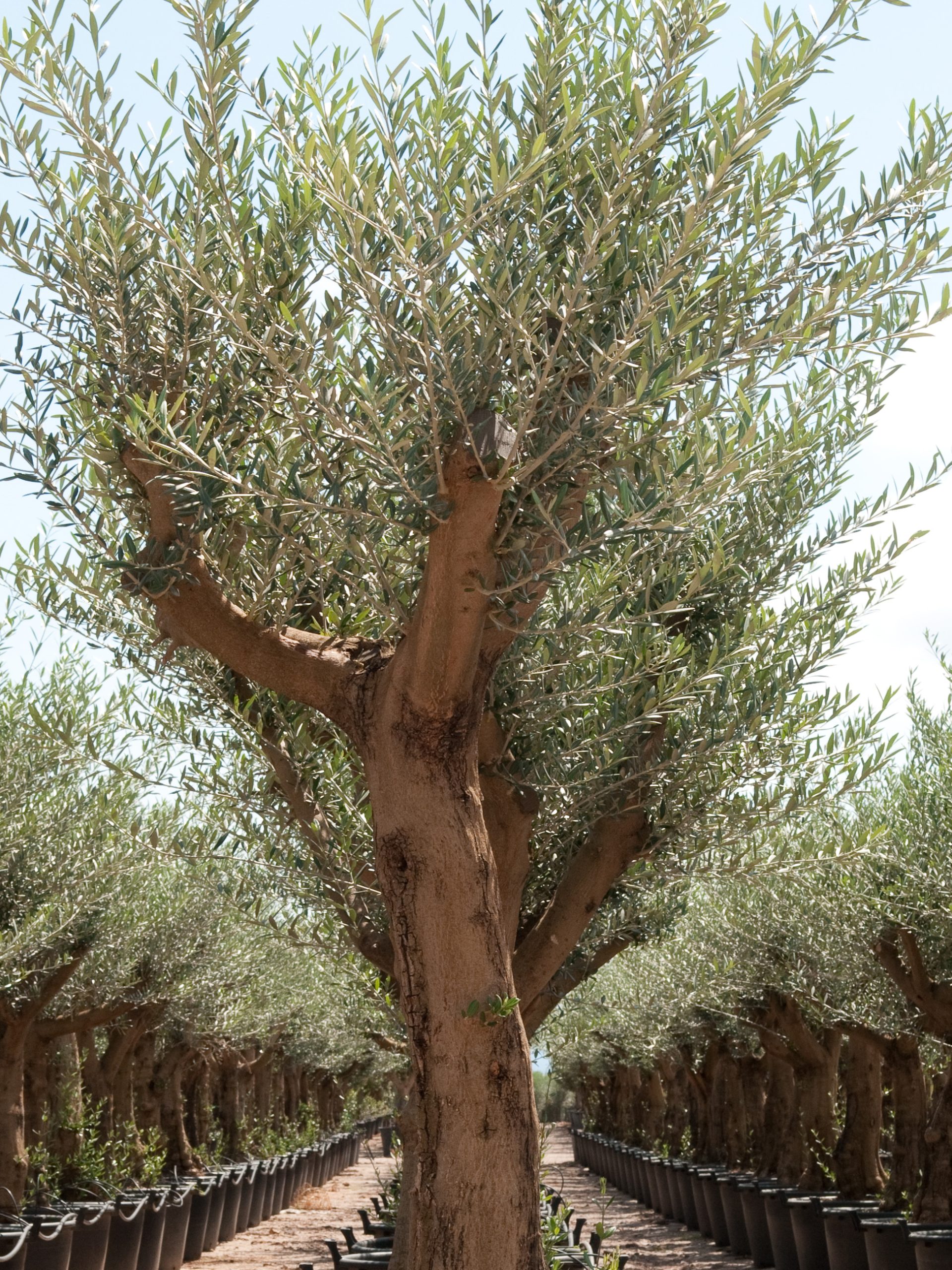
Positioning
Olive trees require a well-drained soil and a sunny position. Even though it can withstand long periods of drouaght, do not confuse the olive tree for a desert plant. It requires regular watering to thrive, especially in a pot.
Olive trees are fairly slow growing and this makes them ideal for container cultivation. It will thrive in a large pot in a bright spot on the patio or balcony, or in an unheated conservatory or greenhouse. In cold or northern regions, winter protection in a conservatory, for example, may be required.
Place your olive tree in a south or west facing position, sheltered position from north and east winds.
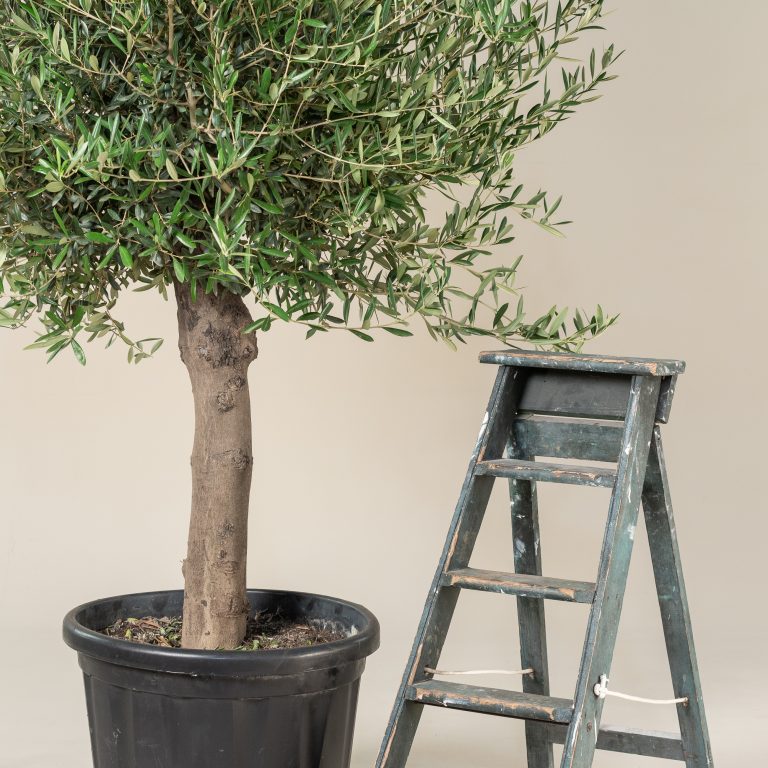
Pot growing
Small and medium olive trees can be grown in pots.
Choose a deep pot with good drainage, as the olive tree is used to a free draining soil.
Repot when necessary. Ideally they should go into a pot that is 50% wider and deeper than the one they’re moved from.
Place a layer of grit or gravel at the bottom.
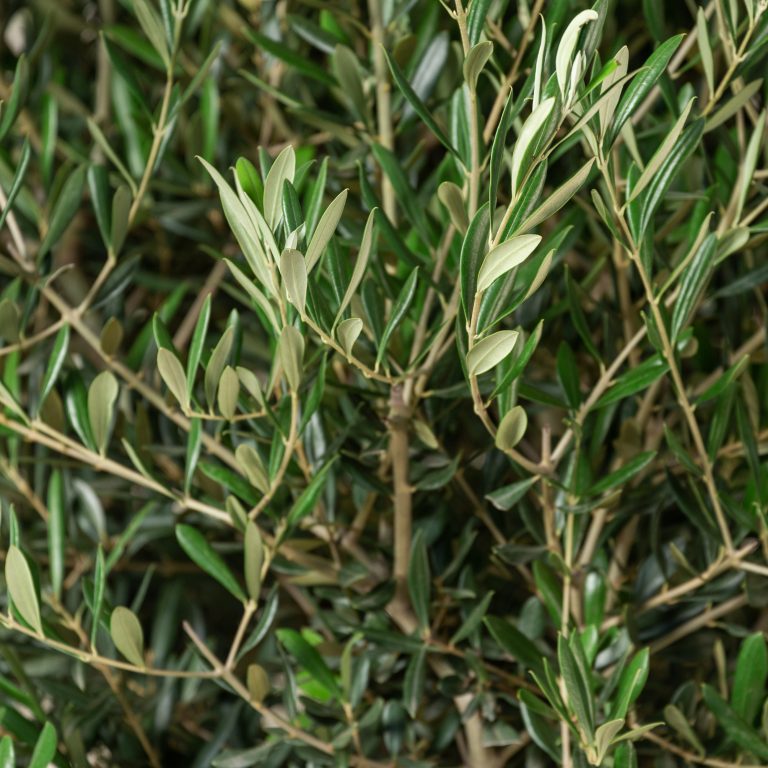
Growing in the ground
Olive trees can be planted all year round, as long as the ground is not frozen.
Before planting, the root ball should be well watered. Dig a hole twice the size of the root-ball, gently loosen and spread the roots as you refill the hole to the original soil mark at the base of the stem.
Backfill the planting hole with multi-purpose compost mixed with the soil and water thoroughly. Keep the plant well watered for several weeks to encourage it to establish in the new position.
Unless in a sheltered position, for the first few seasons it’s wise to provide a stake for support whilst the plant establishes sturdy roots and a strong trunk.
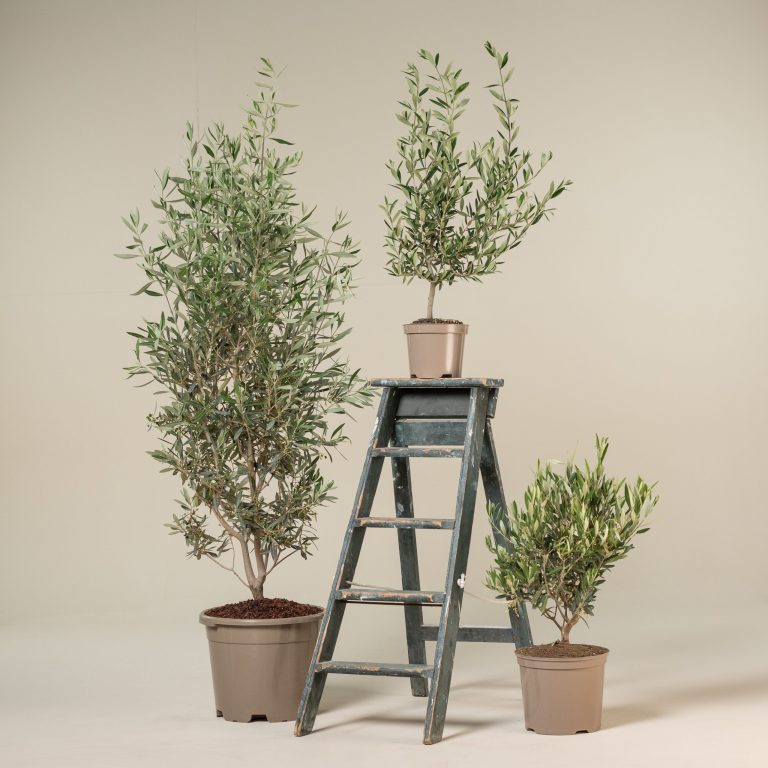
Soil
Olive trees are happy in almost any type of soil, except heavy clay. Good drainage is essential.
Using a loam based compost such as John Innes No 3 is best and the addition of about 20% grit will help a lot with drainage. When potting up, the roots can be gently teased free of soil to help them establish but be careful not to damage them.
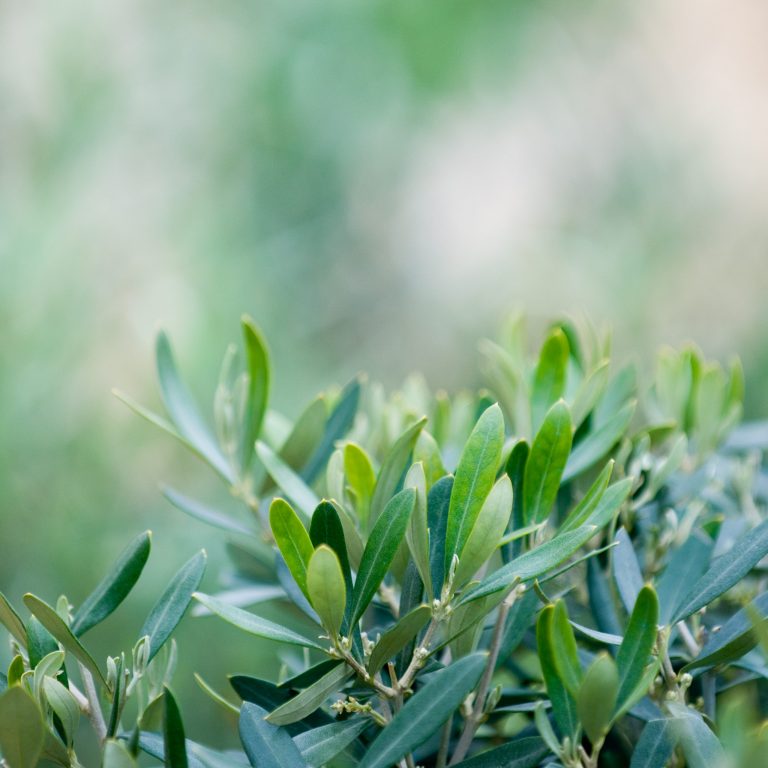
Watering
While the olive trees are quite drought tolerant, it’s recommended not to allow the soil to become too dry. Young olive trees with shallower root systems are most vulnerable to drying out but more-established trees may also suffer in a particularly hot, dry summer. Plants in sandy soils must be watered more often as the soil struggles to retain moisture.
For plants in pots, allow the top few inches to become dry to touch and water until the excess water drains away at the bottom of the pot.
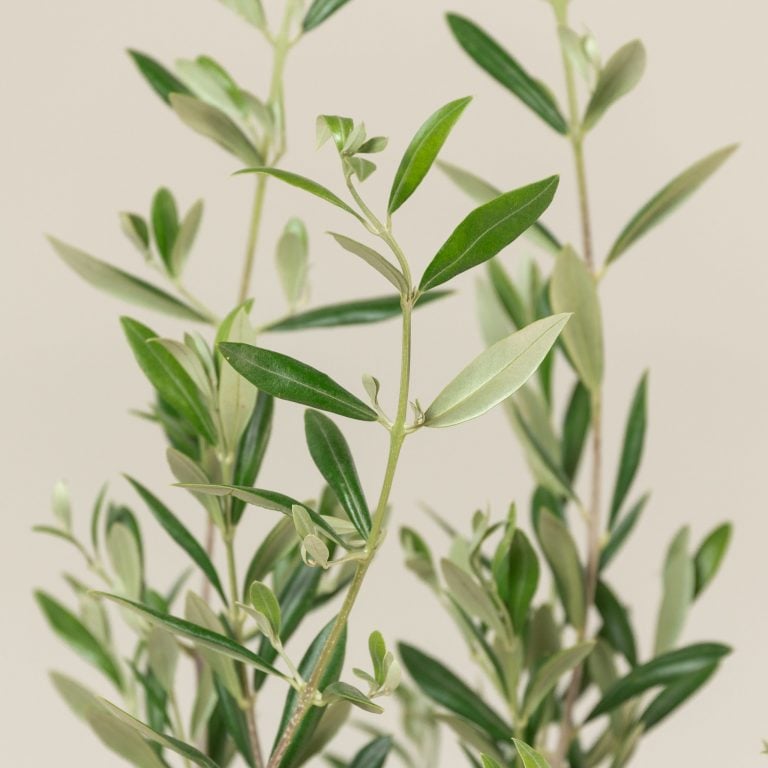
Pruning
An olive tree tend to respond well to pruning. Dead and awkwardly grown branches can be removed in late spring.
Pinching out the tips of the young shoots encourages branching.
Always wait to trim until the rains of winter are done, since pruning opens entry points for water-borne disease to enter the tree.
Do not prune your olive trees after August. This ensures the tree has enough time to heal before winter sets in.
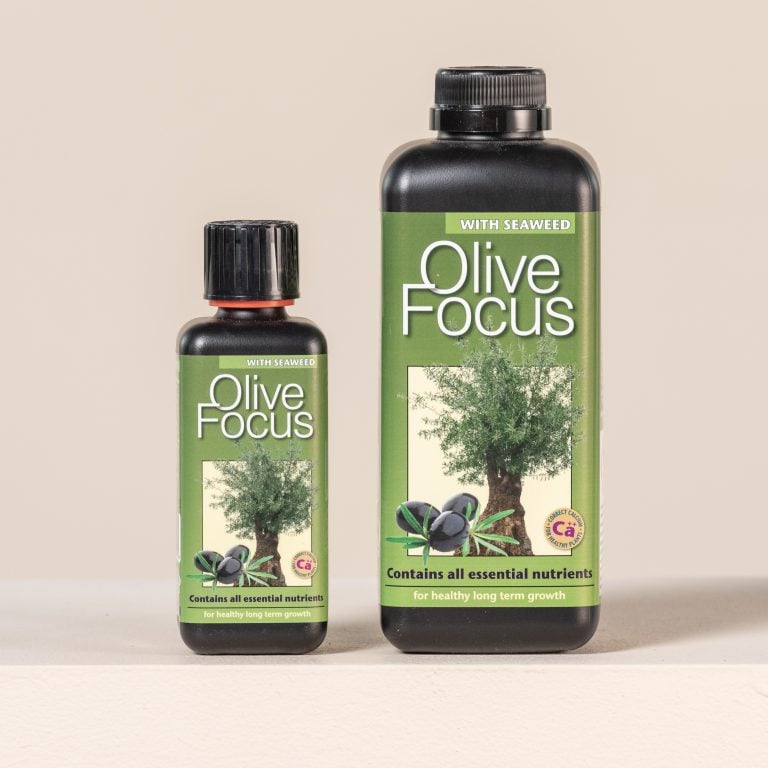
Feeding
Olive trees are adapted to grow in very poor and rocky soils, but they will do well with a bit of extra feed.
Applying a balanced liquid fertiliser every month from early spring to mid-August will encourage healthy growth, or use a slow release fertiliser.
Alternatively you can use also such as fish, blood and bone meal in early spring.
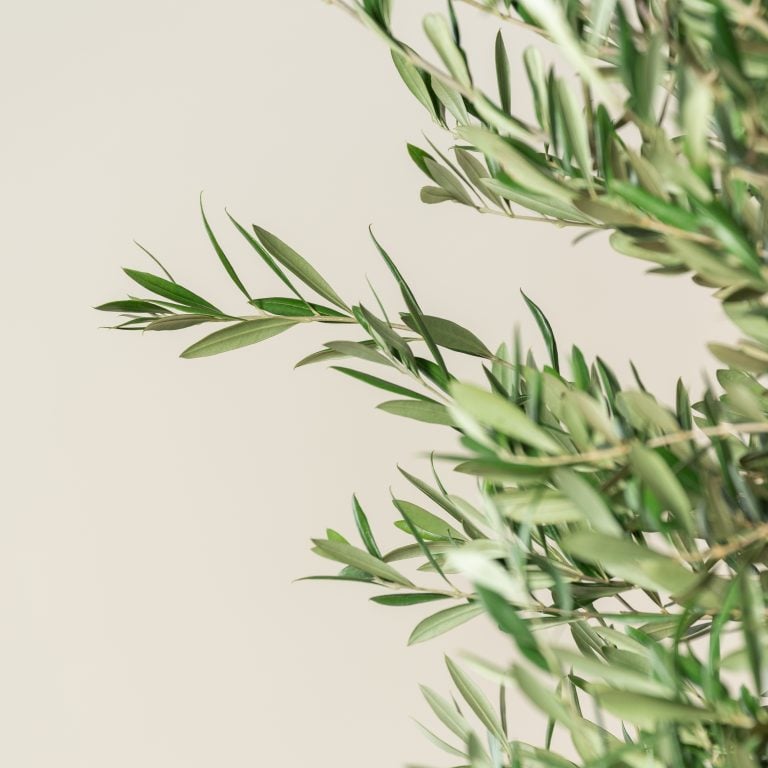
Winter care
Olive trees are cold hardy down to -10 degrees. They may require some overwinter protection in harsh winters or in northen regions.
Newly planted olive trees, young plants and new shoots are especially susceptible to frost damage. Young plants kept in pots can be placed in conservatories or unheated greenhouses.
A horticultural fleece or hessian fabric can help protecting the leaves from frost.
Don’t be alarmed if your tree begins to drop leaves when spring arrives, olives naturally shed older foliage as the new season’s growth begins.

